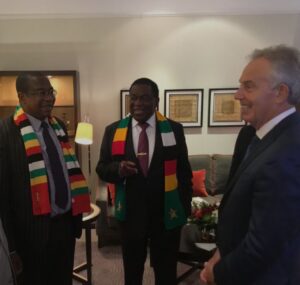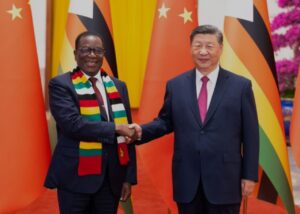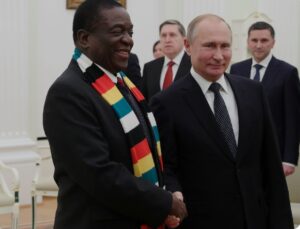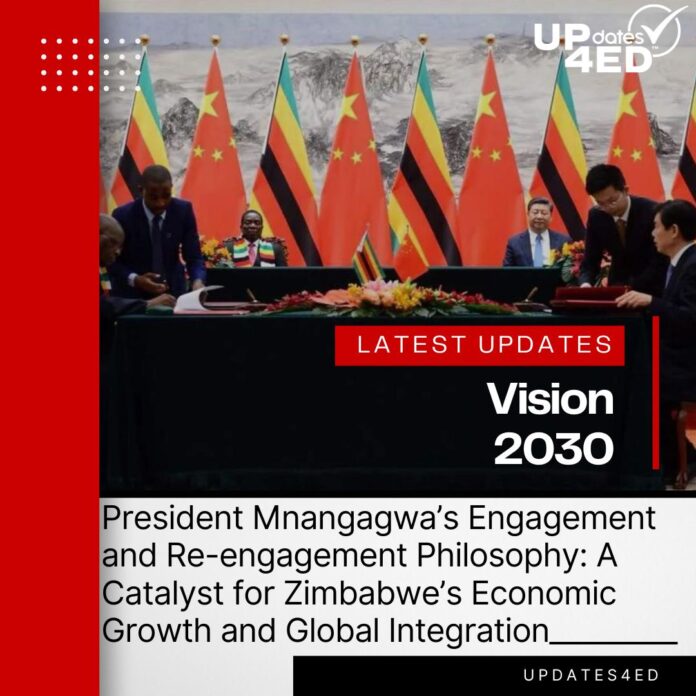 The engagement and re-engagement philosophy championed by His Excellency, President Dr. Emmerson Dambudzo Mnangagwa, has yielded tangible bilateral relations that underscore Zimbabwe’s commitment to strengthening its position globally. Below are examples of key bilateral relations cemented by President Mnangagwa that align with this visionary policy:
The engagement and re-engagement philosophy championed by His Excellency, President Dr. Emmerson Dambudzo Mnangagwa, has yielded tangible bilateral relations that underscore Zimbabwe’s commitment to strengthening its position globally. Below are examples of key bilateral relations cemented by President Mnangagwa that align with this visionary policy:
1.  Zimbabwe–China Relations
Zimbabwe–China Relations
• Strategic Partnerships in Infrastructure and Energy:
• President Mnangagwa’s administration has deepened ties with China, resulting in substantial investments. Notable examples include the expansion of the Hwange Thermal Power Station, funded by the China Export-Import Bank, which has increased Zimbabwe’s energy capacity.
• The Chinese-funded rehabilitation of the Robert Gabriel Mugabe International Airport is another milestone project aimed at modernizing infrastructure to support trade and tourism.
• Support Through FOCAC (Forum on China-Africa Cooperation):
• China has remained a key ally, providing economic and technical assistance. Zimbabwe benefited from COVID-19 vaccines and medical supplies as part of China’s global pandemic response.
2.  Zimbabwe–Russia Relations
Zimbabwe–Russia Relations
• Mining Sector Development:
• During his visits to Russia, President Mnangagwa strengthened cooperation in the mining sector. The Darwendale Platinum Project, a joint venture between Zimbabwe and Russian investors, stands as a flagship initiative. This project is among the largest platinum developments in Africa and symbolizes the mutual economic benefits of this partnership.
• Education and Technology Exchange:
• Zimbabwean students continue to receive scholarships to study in Russian universities, enhancing knowledge exchange in medicine, engineering, and technology.
3.Zimbabwe–Belarus Relations
• Agricultural Mechanization:
• President Mnangagwa’s strategic engagements with Belarus resulted in the supply of agricultural equipment, including tractors and combine harvesters. This partnership has been critical in boosting Zimbabwe’s food security and enhancing mechanized farming.
• Infrastructure Development:
• Zimbabwe has received Belarusian expertise and equipment for road construction projects, supporting the Second Republic’s infrastructure agenda.
4. Zimbabwe–United Arab Emirates (UAE) Relations
• Diversification of Trade and Investment:
• The UAE has become a significant trading partner, particularly in the diamond and gold sectors. President Mnangagwa has secured agreements for Zimbabwe to export diamonds and gold to the UAE, expanding the country’s revenue streams.
• Tourism Promotion:
• Zimbabwe has actively engaged the UAE to attract investments in tourism, as evidenced by its participation in Expo 2020 Dubai, where the country marketed its iconic destinations such as Victoria Falls.
5. Zimbabwe–United Kingdom (UK) Relations
• Re-engagement with Western Nations:
• President Mnangagwa’s administration has taken steps to rebuild relations with the UK, which had been strained for decades. High-level discussions have focused on economic cooperation, investment, and the potential easing of sanctions. The presence of UK investors at trade expos such as the Zimbabwe International Trade Fair (ZITF) reflects warming relations.
• Education and Scholarships:
• The UK remains a destination for Zimbabwean students, fostering intellectual exchange and capacity building.
6. Zimbabwe–India Relations
• Healthcare and Pharmaceutical Cooperation:
• President Mnangagwa has strengthened ties with India, particularly in the pharmaceutical sector. Indian companies have invested in supplying affordable medicines and medical equipment to Zimbabwe.
• Technology Transfers:
• Partnerships with India have also supported the ICT sector, with training programs aimed at enhancing technological capacity in Zimbabwe.
7. Zimbabwe–Turkey Relations
• Investment in Agriculture and Construction:
• Turkey has emerged as a critical partner under President Mnangagwa’s engagement drive. Turkish investors are exploring opportunities in agriculture and infrastructure development, including the construction of dams and irrigation systems.
• Cultural Exchange:
• The growing relationship has also encouraged cultural exchanges, with Zimbabwe promoting its heritage to Turkish audiences and vice versa.
8. Zimbabwe–South Africa Relations
• Economic and Trade Ties:
• South Africa remains Zimbabwe’s largest trading partner, and under President Mnangagwa’s leadership, bilateral trade has grown significantly. Cross-border trade agreements have facilitated the export of agricultural products and minerals to South Africa.
• Infrastructure Connectivity:
• Zimbabwe and South Africa continue to collaborate on regional integration projects, such as the Beitbridge Border Post modernization, enhancing trade efficiency within SADC.
9. Zimbabwe–European Union (EU) Relations
• Improved Dialogue and Aid:
• President Mnangagwa’s re-engagement efforts with the EU have resulted in renewed dialogue and developmental support. The EU has provided funding for agriculture, climate resilience, and governance reforms, signaling a thaw in relations.
• Humanitarian Support:
• The EU has contributed significantly to Zimbabwe’s food security programs and disaster management initiatives.
10. Zimbabwe–Japan Relations
• Infrastructure and Renewable Energy:
• Japan has supported Zimbabwe’s infrastructure development through projects such as the rehabilitation of bridges and roads. The Japanese government has also promoted renewable energy development in Zimbabwe through grants and technical assistance.
Conclusion
President Mnangagwa’s engagement and re-engagement philosophy has reinvigorated Zimbabwe’s bilateral relations, laying a foundation for economic recovery, cultural integration, and global partnerships. By actively seeking collaboration with nations across diverse regions, Zimbabwe is positioning itself as a strategic partner in the global arena, fostering mutual benefits that align with the country’s Vision 2030 goals.
#Vision2030
#GlobalIntegration
#EngagementReengagement
